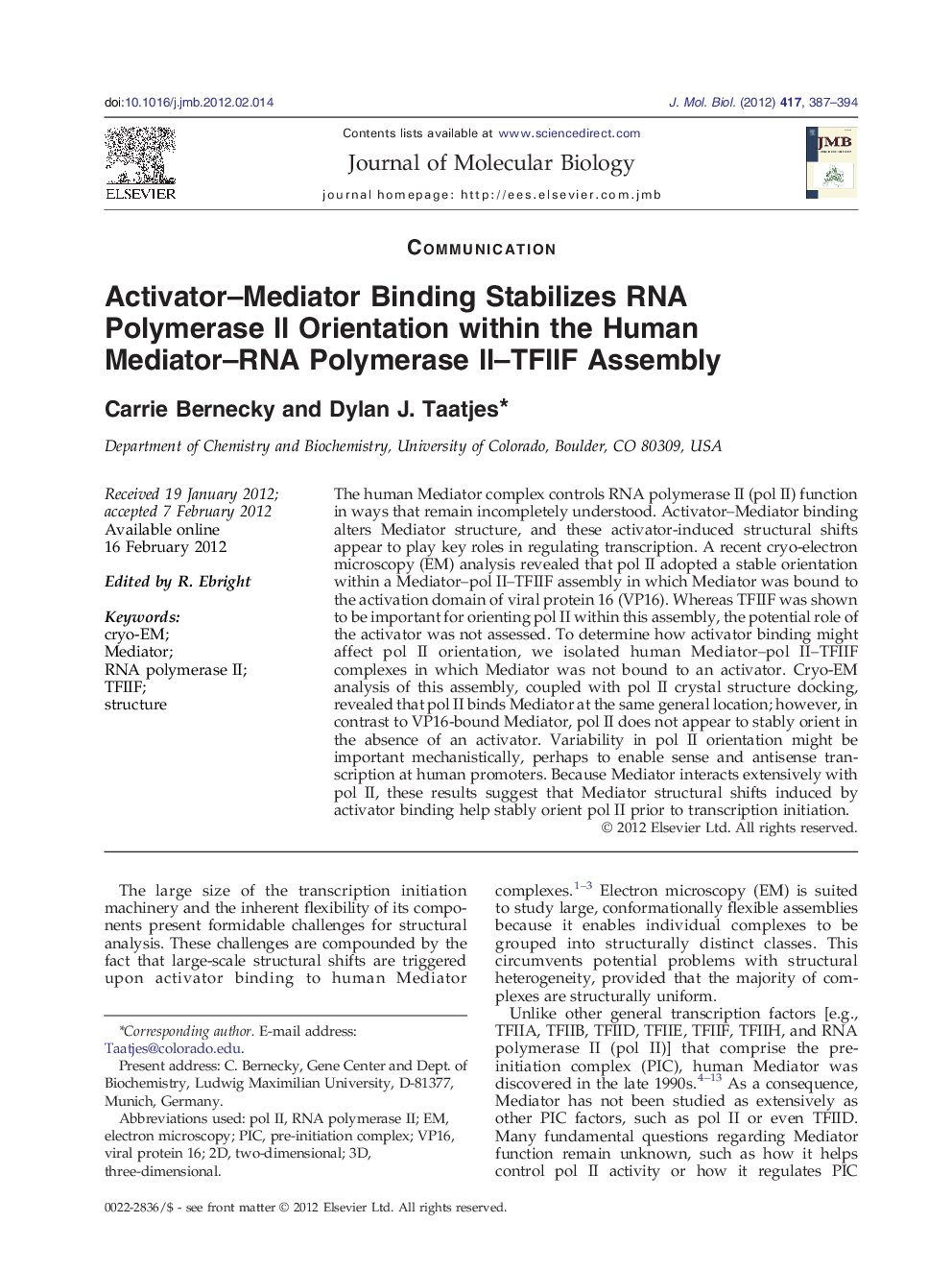| کد مقاله | کد نشریه | سال انتشار | مقاله انگلیسی | نسخه تمام متن |
|---|---|---|---|---|
| 2184678 | 1095913 | 2012 | 8 صفحه PDF | دانلود رایگان |

The human Mediator complex controls RNA polymerase II (pol II) function in ways that remain incompletely understood. Activator–Mediator binding alters Mediator structure, and these activator-induced structural shifts appear to play key roles in regulating transcription. A recent cryo-electron microscopy (EM) analysis revealed that pol II adopted a stable orientation within a Mediator–pol II–TFIIF assembly in which Mediator was bound to the activation domain of viral protein 16 (VP16). Whereas TFIIF was shown to be important for orienting pol II within this assembly, the potential role of the activator was not assessed. To determine how activator binding might affect pol II orientation, we isolated human Mediator–pol II–TFIIF complexes in which Mediator was not bound to an activator. Cryo-EM analysis of this assembly, coupled with pol II crystal structure docking, revealed that pol II binds Mediator at the same general location; however, in contrast to VP16-bound Mediator, pol II does not appear to stably orient in the absence of an activator. Variability in pol II orientation might be important mechanistically, perhaps to enable sense and antisense transcription at human promoters. Because Mediator interacts extensively with pol II, these results suggest that Mediator structural shifts induced by activator binding help stably orient pol II prior to transcription initiation.
Graphical AbstractFigure optionsDownload high-quality image (234 K)Download as PowerPoint slideHighlights
► Cryo-EM analysis of an activator-free human Mediator–pol II–TFIIF assembly.
► Pol II docking reveals that pol II does not adopt a single, stable orientation.
► By contrast, pol II stably orients when Mediator bound to activator VP16.
► Variable pol II orientation may facilitate divergent (sense:antisense) transcription.
► Suggests an additional role for activators in controlling pre-initiation complex architecture.
Journal: Journal of Molecular Biology - Volume 417, Issue 5, 13 April 2012, Pages 387–394